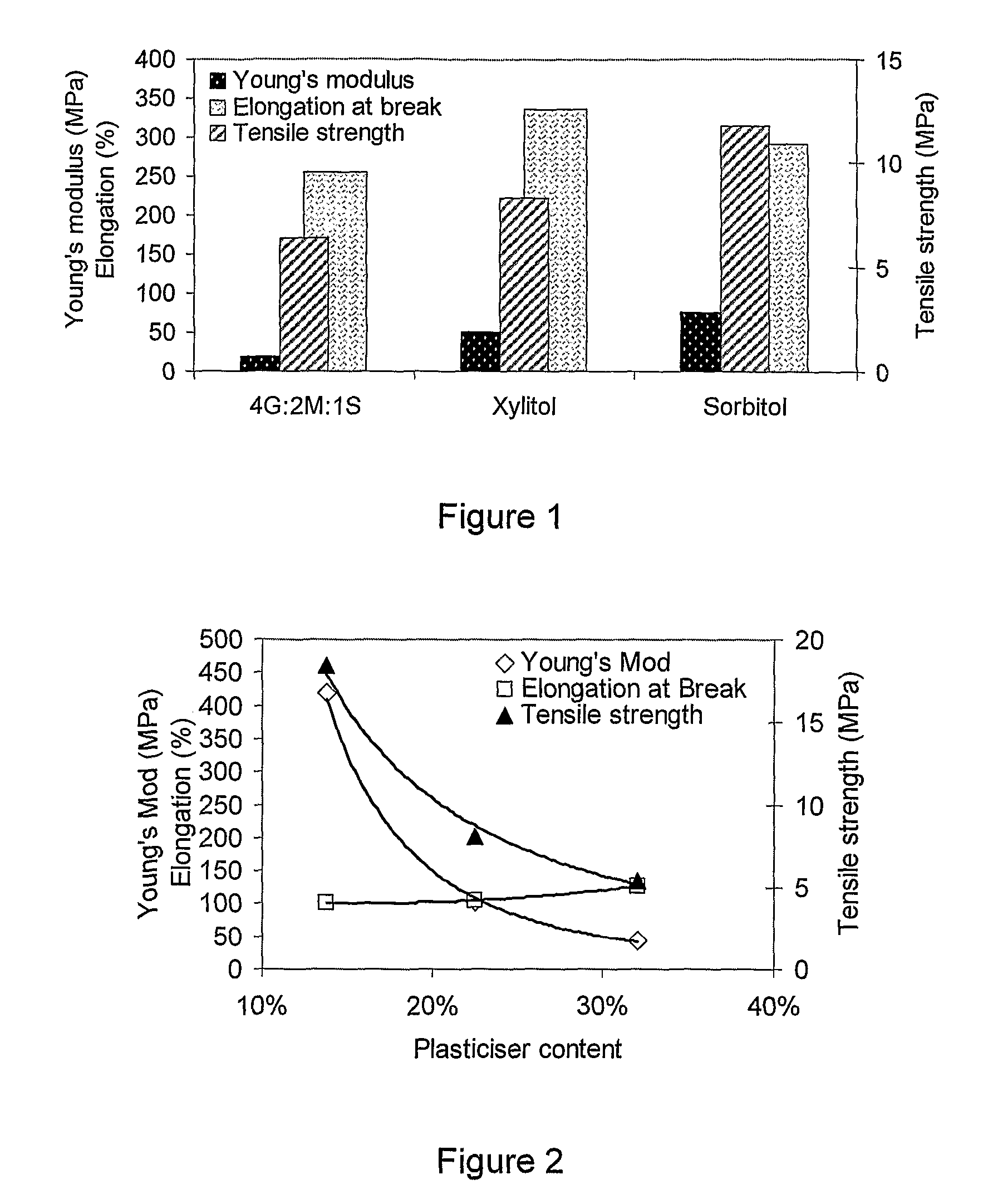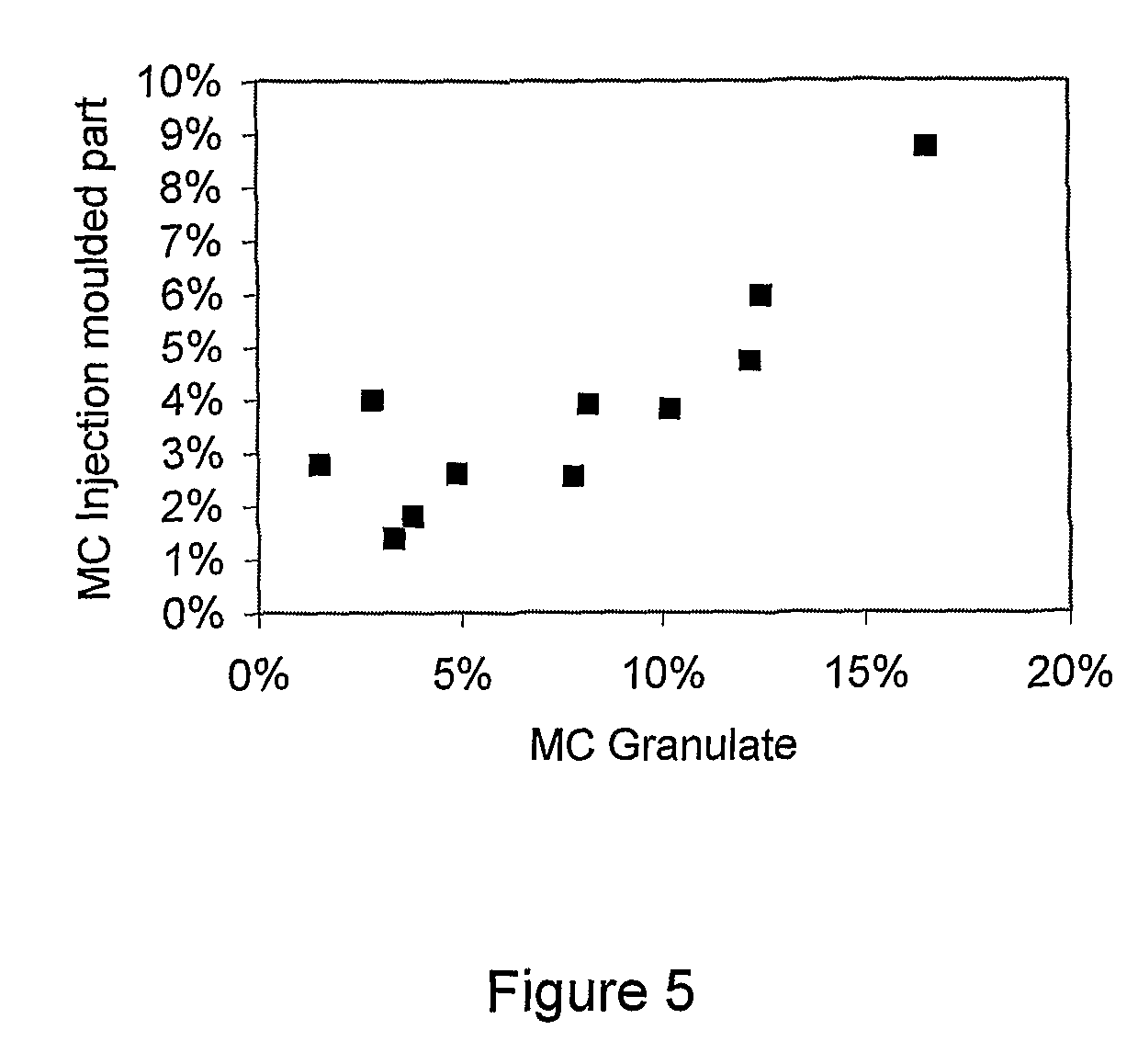Mouldable biodegradable polymer
a biodegradable polymer and moulding technology, applied in the direction of synthetic resin layered products, inks, textiles and paper, etc., can solve the problems of adverse effects on the molecular structure of starch, difficulty in producing starch based polymers, and need attention, so as to increase the degree of substitution, increase the hydrophobicity, and increase the degree of hydrophobicity
- Summary
- Abstract
- Description
- Claims
- Application Information
AI Technical Summary
Benefits of technology
Problems solved by technology
Method used
Image
Examples
example 1
[0066]A formulation was developed which contained the same grades and relative proportions of starch, PVOH and stearic acid as the “Control” formulation but 23% plasticizer (on dry basis). The plasticizer system consist of a mixture of glycerol, maltitol and sorbitol in the ratios 3.3:1.5:1. In addition this formulation contains 1% of a polyethylene oxide for biocompatibility and 1.7% glycerol monostearate as emulsifier. It meets all the mechanical property requirements for the tampon applicator, as illustrated in Table 5.
Example 2
[0067]The second formulation is identical to Example 1 with the exception of the composition of the plasticizer, which consists of glycerol, maltitol and sorbitol in ratios 4.3:1:3.5. This significantly higher sorbitol level results in a higher Young's modulus as illustrated in Table 4.
example 3
[0068]The Control formulation is not suitable for tampon applicators, because it fails the Cytotoxicity test required to ensure biocompatibility to the level required of a medical device class IIA. In this Example, stearic acid which is instrumental in the cytotoxicity was removed and PEO added at a level of 0.6%.
example 4
[0069]Also developed to verify the determining factors in cytotoxicity, this Example has a 5.5% level of PEO, whilst maintaining the same level of stearic acid as the Control formulation.
PUM
 Login to View More
Login to View More Abstract
Description
Claims
Application Information
 Login to View More
Login to View More - R&D
- Intellectual Property
- Life Sciences
- Materials
- Tech Scout
- Unparalleled Data Quality
- Higher Quality Content
- 60% Fewer Hallucinations
Browse by: Latest US Patents, China's latest patents, Technical Efficacy Thesaurus, Application Domain, Technology Topic, Popular Technical Reports.
© 2025 PatSnap. All rights reserved.Legal|Privacy policy|Modern Slavery Act Transparency Statement|Sitemap|About US| Contact US: help@patsnap.com



